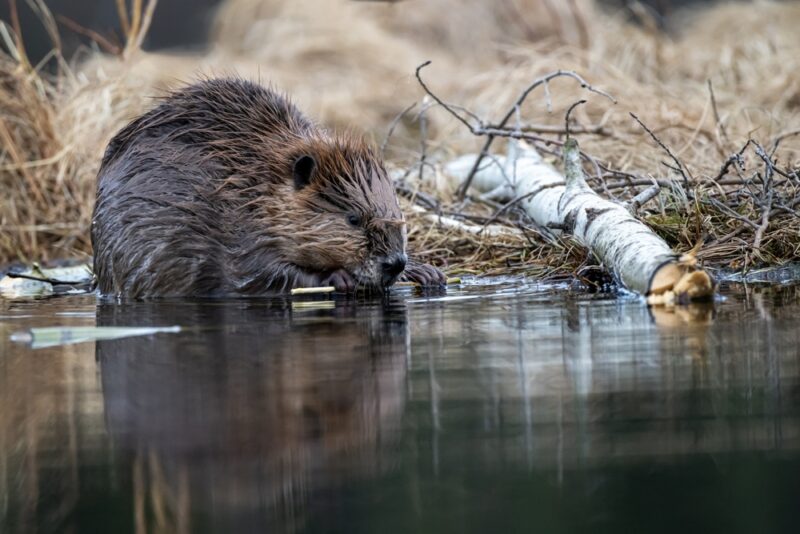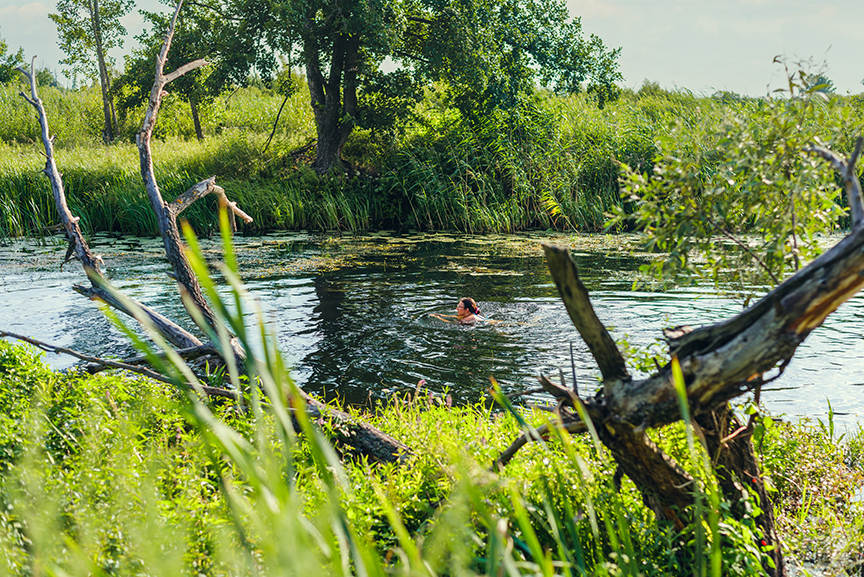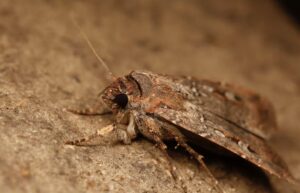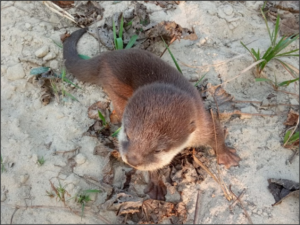Next time you’re thinking about pond swimming, look for signs of beavers. A new study shows that these industrious rodents improve water quality, making wild swimming safer.
Among nature’s best engineers, beavers build dams that slow the flow of water and create small pools. These dams act as natural filters. They trap pollutants and keep harmful agricultural runoff out of our waterways. Stillwater pools allow sediment and pollutants to settle rather than flow downstream, significantly reducing harmful chemicals in the water.
“These ponds act as natural traps for pollutants and silt, especially when muddy or contaminated water flows in from upstream,” co-author Nigel Willby told The Times. “[This] benefits downstream ecosystems.”
The University of Stirling study found that water passing through areas inhabited by beavers had fewer pollutants compared to those without. Their dams cut pollution by up to 95%. This is particularly good news for wild swimmers, who risk infections and illnesses when dipping into contaminated water.

Photo: Shutterstock
A cheap and simple solution
Agricultural pollution is an ongoing issue across the UK. Pesticides, fertilizers, and sewage often pour into rivers, destroying many once-popular wild swimming spots. Beavers might be the most cost-effective solution to this issue. Their dams require no maintenance and work around the clock. The reintroduction of beavers in certain areas has already shown very promising results.
Fishing enthusiasts also benefit from their presence since cleaner water means healthier fish populations. Often, excessive nutrients from agricultural runoff cause algal blooms on the surface of the water. This blocks the sunlight from aquatic plants, depleting the oxygen in the water and eventually suffocating underwater life.
Many conservationists are arguing for reintroducing beavers to more rivers and lakes. Some landowners worry that the dams may cause local flooding, but the overall benefits outweigh the drawbacks.






